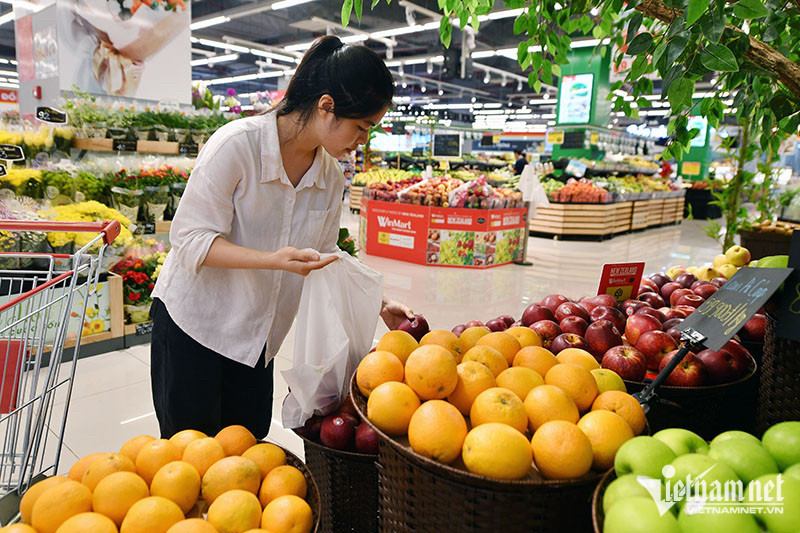
Imported fruits are ubiquitous, spanning traditional markets to online platforms and sprawling across major supermarkets, overshadowing domestic produce. Notably, alongside premium fruits, numerous varieties are imported and sold at competitive, even rock-bottom prices.
Data from the General Department of Customs reveals that, as of mid-May 2024, Vietnam has imported fruits and vegetables worth 725.6 million USD to meet domestic demand. In 2023 alone, fruit and vegetable imports totaled 1.96 billion USD.
China stands as Vietnam's principal supplier, accounting for 794.7 million USD, constituting 40.5% of the total import turnover. The US follows, with imports totaling 331.5 million USD, and Australia trails with 142.4 million USD.
In terms of specific fruits, apples top the list, with imports totaling 237.1 million USD in 2023, representing 21.8% of the total fruit import turnover. Apples, imported year-round, feature an array of varieties, with prices ranging from modest to exorbitant, contingent upon origin.
Following apples, grapes emerge as the second most imported fruit, at 158.4 million USD, accounting for 14.6% of the total import turnover. Tangerines and pears secure the third and fourth positions, constituting 7.1% and 5% of the total respectively.
These fruits, predominantly from China, inundate the market with their affordability. Grapes, in particular, flood the domestic sphere, not only from traditional suppliers like the US and Australia but also from China, which significantly expands its cultivation areas.
An industry expert notes that import volumes are contingent upon market demand. Fruits imported into Vietnam are typically those beyond domestic production capacities or areas where Vietnam lacks competitive advantage.
For instance, Vietnamese apples and pomegranates face cultivation challenges, necessitating imports. Similarly, while grapes and pears boast growing regions, domestic output remains limited, prompting reliance on imports to meet domestic consumption needs.
The predominance of low-priced fruits from China with high output explains the consistent influx of apples, grapes, tangerines, and pears into Vietnam.
Tam An